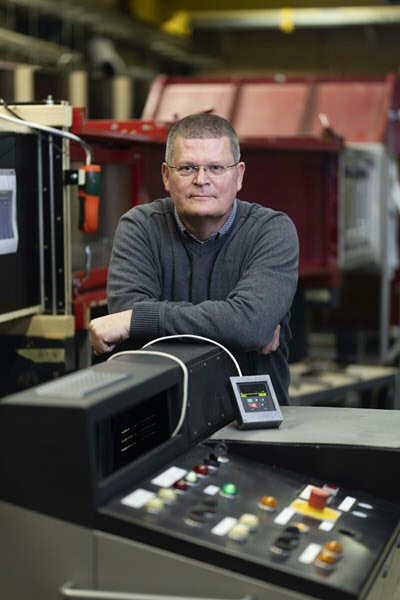From paperclip to patent | Eize Stamhuis
How is it possible that an albatross doesn’t crash and die when it lands? And how come its large wings don’t break due to air resistance? That is what you would expect, according to the laws of aerodynamics. However, Professor Eize Stamhuis has discovered that albatrosses land safely by making wiggly wing movements. What is more, he sees a possible application of this oscillation technique to make the blades of wind turbines more efficient. To protect his intellectual property (IP), he has applied for a patent. He has also attracted interest from industries working on aerodynamics. So, how does he work?
Text: Gert Gritter, Communication UG; photos Jeroen van Kooten
His office in the ultramodern Linnaeusborg building looks like a cabinet of curiosities. On his table, for instance, are various 3D prints of a globe-shaped trunkfish. On the wall hangs a plaster cast of an ichthyosaur, a prehistoric fish-like animal. There are models of penguins. The gills of a paddlefish (from the former Emmen Zoo) float in a pot of formalin. But Stamhuis is not really a collector. He uses these models to develop, apply and market his innovations. They all serve a scientific purpose, inspired by what nature thought up. The wiggly movements that albatrosses, petrels and other large sea birds make with the ends of their wings are a good example. The wiggles enable the birds to generate more lift at low speed, especially before landing. For smaller birds, such as crows, it is enough to simply flap their entire wings. Stamhuis: ‘In my research group, we immediately had a gut feeling that this was worth looking into. It was exciting!’ > Read full news article: News University of Groningen.

| Last modified: | 23 April 2019 2.47 p.m. |
More news
-
13 May 2024
Trapping molecules
In his laboratory, physicist Steven Hoekstra is building an experimental set-up made of two parts: one that produces barium fluoride molecules, and a second part that traps the molecules and brings them to an almost complete standstill so they can...
-
29 April 2024
Tactile sensors
Every two weeks, UG Makers puts the spotlight on a researcher who has created something tangible, ranging from homemade measuring equipment for academic research to small or larger products that can change our daily lives. That is how UG...
-
16 April 2024
UG signs Barcelona Declaration on Open Research Information
In a significant stride toward advancing responsible research assessment and open science, the University of Groningen has officially signed the Barcelona Declaration on Open Research Information.
